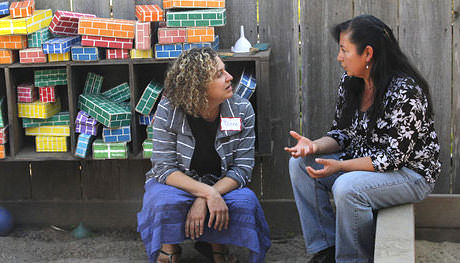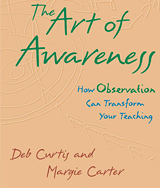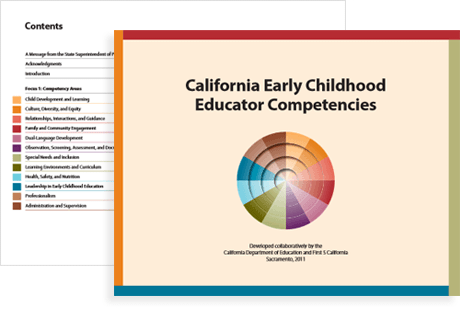When your work is informed by multiple perspectives, you have richer experiences, build stronger relationships, and deepen mutual understandings. Listening to others who have different perspectives can nudge you to reconsider your daily practice and worldview, and recognize and challenge your biases. They can also lead to shared inquiry. Finding areas in which you can collaborate with others is a great way to uncover and experience different perspectives. With CompSAT by your side, you may be inspired to seek the perspectives of the children, families, and colleagues in your program and beyond.

Read two excerpts from "The Art of Awareness - How Observation Can Transform your Teaching", 2012.

"Teachers who use this approach spend their time observing children, working to uncover their point of view and understandings. They do not spend time planning lessons and filling out developmental checklists. They use their observations to guide their responses and ongoing planning. They then draw on them for filling out developmental data or school-readiness assessments."
"When you see your primary teaching role as closely observing children and communicating what you see, you’ll find yourself surrounded by amazing learning encounters. Becoming a keen observer is a way to learn child development, to find curriculum ideas, and to meet requirements for assessing outcomes. It’s also a way to keep from burning out in a stressful job."
In the book, "The Art of Awareness - How Observation Can Transform your Teaching", authors Margie Carter and Deb Curtis explain that the key to observing children is to know that observation is more than just a teaching technique. Observing children closely provides a new way of thinking about learning and teaching.
Collect a variety of objects that have some hidden, moveable parts as part of their function, such as a kitchen timer, pen with a variety of ink colors, wind-up toys, a combination lock, Etch-A-Sketch drawing toy, kaleidoscope, or staple gun. Work with a partner or a small group and choose one of the objects to examine.
Follow this procedure in exploring your object:
Observe two children engaged in a conflict. With a partner, put yourself in the children's shoes. Use the following questions as a guide and then notice your different guesses, points of view, and feelings about the situation.
Use this template to record your observations, thoughts, and feelings. Download the Template
Review Performance Area 1 to deepen your understanding of Observation in the CA ECE Competencies. Scroll to page 52.
Can you find other places in this competency area that address your interests and needs?

Check out The Results Matter Video Project on the California Department of Education Child Development website.
Larry Edelman and The Results Matter Video Project team have recently added two new sections and posted more than 30 new videos to their free Video Library. Take a look around, watch the clips online or download them for free for use in activities such as professional development, team meetings, observation practice, and parent orientation. Below are some highlights of recent additions.
Early Care and Education
There are 10 videos in this section in which teachers share stories and illustrate the ways in which they are using video in their work. Be sure to watch "Watching Video Documentation with Children."
Clips for Practicing Observation, Documentation and Assessment Skills
Access 48 clips of children participating in typical preschool routines and activities. The clips were produced to be used in professional development activities to give early care and education providers an opportunity to practice observation, documentation, and authentic assessment skills. Five of the clips are in a Spanish-speaking classroom.